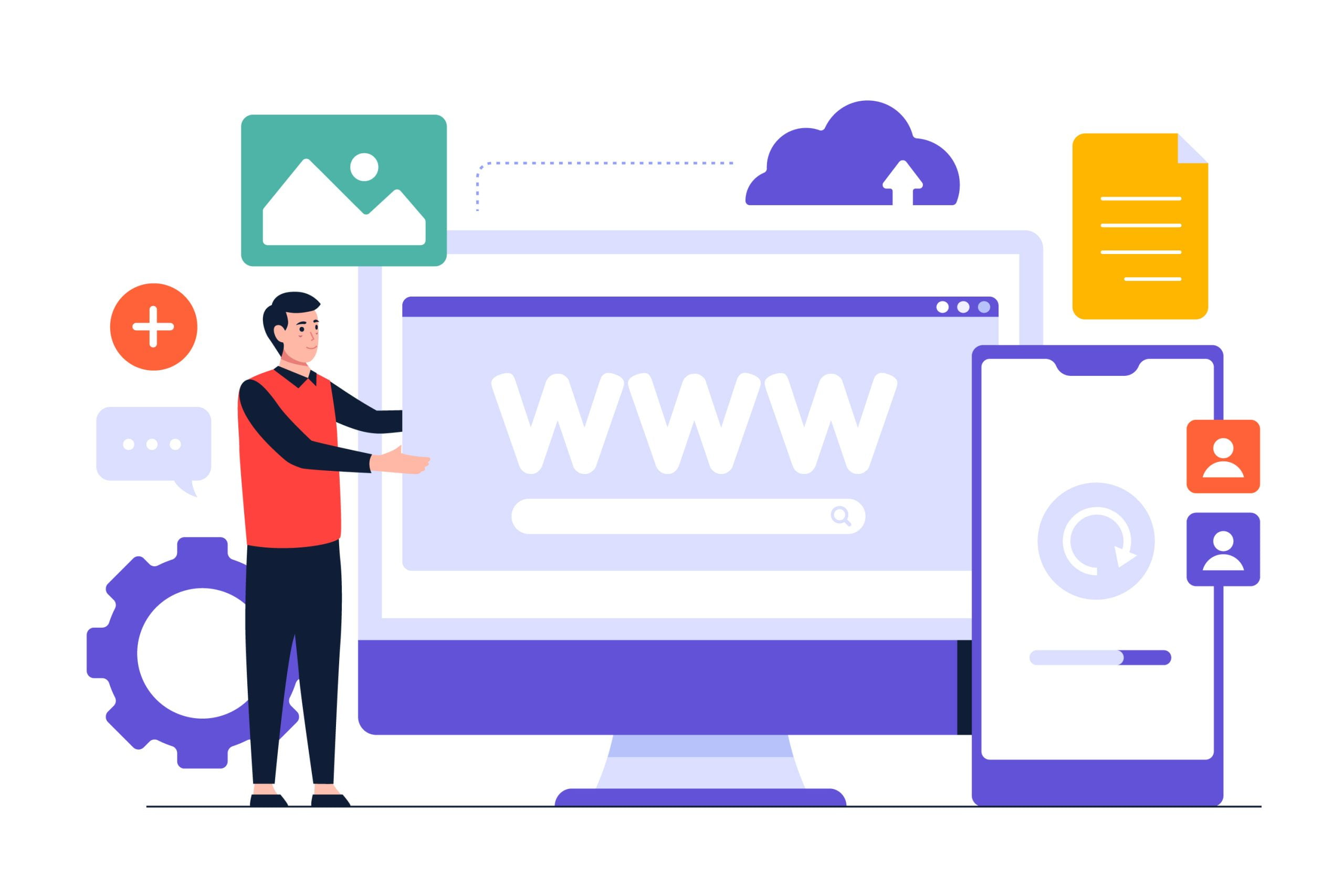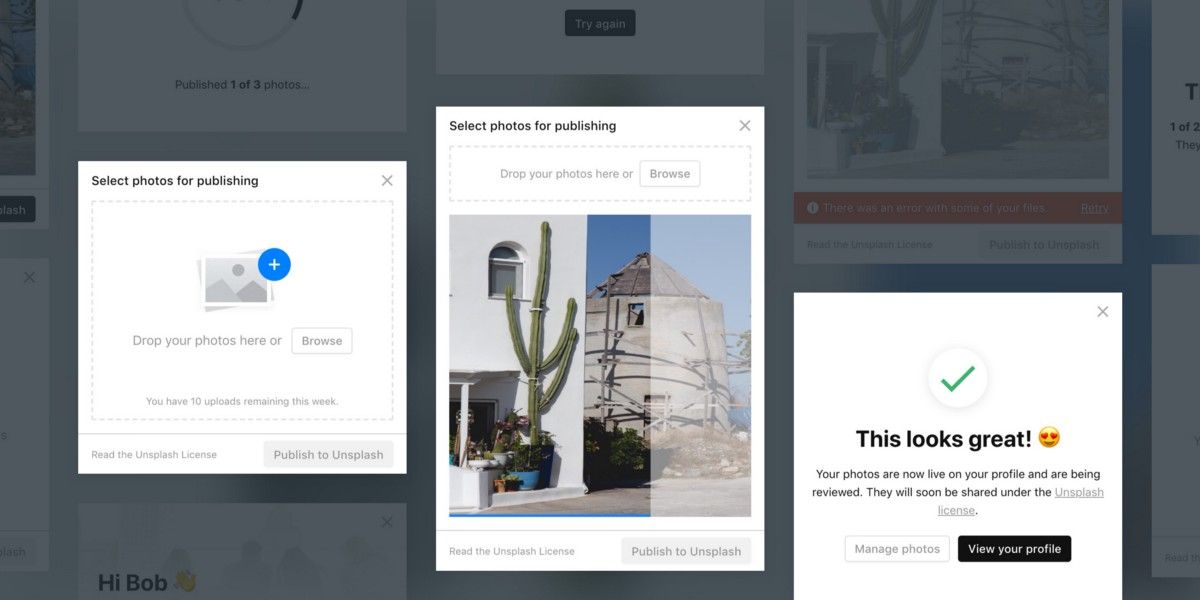-makes up your business’s image and name recognition.
-gives you the chance to stay connected with your clients and permits them to contact you.
-enables you to distribute products and provide services online.
Obtain a domain name and URL
Are you starting a new business and wondering how to choose a domain name that will help your business grow? Choosing the right domain name can be a difficult decision, but it can also be an important factor in the success of your business. Here are some tips to help you select a domain name that will help your business grow.
First, consider the keywords that are associated with your business. You want to choose a domain name that includes keywords related to your business so that it can be easily found in search engine results. For example, if you are selling pet supplies, you may want to include the words “pet supplies” in your domain name.
Second, think about how easy it is to remember and type the domain name. You want to choose a domain name that is easy to remember and type so that customers can easily find and visit your website. Try to avoid using long words or complicated spellings that may be difficult to remember.
Third, consider the length of the domain name. You want to choose a domain name that is short and concise so that it can be easily recognized and remembered. Long domain names may be difficult to remember and can be confusing for customers.
Fourth, make sure that the domain name is available. Before you register the domain name, you should make sure that it is available and not already taken. You can do this by using a domain name search tool.
Finally, consider the cost of the domain name. Depending on the domain name, the cost can range from a few dollars to hundreds of dollars. You should consider the cost of the domain name and how it fits into your budget.

Configure an email account that corresponds with your website name
You can decide to make use of free email services for your business, however, creating an email that aligns with your domain name and business name can come off as more professional.
To illustrate, having an email such as info@mywebsite.com looks better than mywebsite@yahoo.com. The vendor who registers your domain name or web hosting company may provide an email service or charge extra for the feature.
Search a web hosting company
Selecting the Right Hosting Provider
The first step in the website publishing process is selecting a hosting provider. There is a variety of hosting providers to choose from, and it’s important to select one that is reliable, secure, and offers the features you need. It’s also important to consider the cost of hosting, as well as the customer support offered by the hosting provider.
These businesses offer you a safe area on their server to store all your website’s material. You can employ the same company you registered your domain name with, or you can opt for another host if that better suits your business. The monthly cost for web hosting can fluctuate based on the size of your website and the number of visits you receive.

Registering a Domain Name
Once you’ve selected a hosting provider, the next step is to register a domain name. A domain name is the address of your website, and it helps people find you online. When selecting a domain name, it’s important to choose something easy to remember and spell. Additionally, you should make sure that the domain name is available and not already taken.
Design Your Website for Maximum Impact: Tips for Achieving Success
When it comes to designing a website for maximum impact, there are many tips and tricks that can help you achieve success. Whether you are a web designer or a business owner, having a well-designed website can be the key to success. Here are some tips for designing a website that will have maximum impact.
1. Focus on usability:
The most important thing to consider when designing your website is usability. Make sure that your website is easy to navigate and understand. Visitors should be able to find what they are looking for quickly and easily. This means that your website should have a clear navigation structure and a logical layout.
2. Create an attractive design:
Your website should have an attractive design that is visually appealing. This means using colors and images that are pleasing to the eye. It also means using a font that is easy to read and a layout that is easy to follow.

3. Optimize for search engines:
Search engine optimization (SEO) is an important part of website design. SEO involves optimizing your website so that it ranks higher in search engine results. This means using keywords and phrases that are relevant to your website and optimizing your content for those keywords.

4. Make sure your website is mobile-friendly:
With more and more people using mobile devices to access the internet, it is important to make sure your website is mobile-friendly. This means ensuring that your website can be viewed on a variety of devices and that it is easy to navigate.
5. Utilize social media:
Social media is a great way to promote your website and reach a wider audience. Make sure to create social media accounts for your website and post regularly. This will help to drive traffic to your website and can help to build your brand.

6. Use analytics:
Analytics are a great way to track the performance of your website. Analytics can help you to understand how visitors are interacting with your website and can help you to identify areas that need improvement.

These are just a few tips for designing a website for maximum impact. By following these tips, you can ensure that your website is optimized for success.
Tips for Building a User-Friendly Website
Creating a website is a great way to reach out to customers, showcase your products and services, and drive more sales and leads. With the right tips and strategies, you can build a user-friendly website that engages visitors and encourages them to take action. Here are some tips for building a user-friendly website.
First and foremost, you need to create a website that is visually appealing. This means using a modern design with a professional look and feel. Make sure your website is easy to navigate, with clear menus, call-to-action buttons, and easy-to-find content. Additionally, make sure your website is mobile friendly and responsive, so that visitors can access it on any device.
Second, create a website that is easy to use. Make sure your website is intuitive and easy to understand. Provide clear instructions and tutorials for visitors to follow. If you have a sign-up form, make sure it is easy to fill out, with step-by-step instructions. Additionally, be sure to include helpful search functions, so that visitors can quickly find the information they are looking for.
Third, create a website that is fast and reliable. Make sure your website loads quickly, and that it is always up and running. Additionally, you should use a reliable hosting provider to ensure that your website can handle high levels of traffic and provide a smooth user experience.
Finally, create a website that is secure. Make sure your website is encrypted and secure to protect customer data. Additionally, use two-factor authentication and other security measures to protect customer information.
By following these tips, you can create a website that is user-friendly, visually appealing, easy to use, and secure. With the right strategies and a little bit of effort, you can build a website that engages visitors, drives more leads and sales, and boosts your business.

Manage website content
Managing website content is an important part of creating an effective online presence. It is essential for businesses to ensure that their website content is up-to-date, well organized, and engaging for visitors. To add and manage website content effectively, there are a few tips and tricks that can help.
First, make sure to keep content fresh. Adding new content to your website on a regular basis will ensure that visitors stay engaged and interested in what you have to offer. This could include blog posts, new products, or even events that you are hosting. Additionally, it is important to update any existing content as needed to make sure that it is accurate and relevant.
Second, make sure to keep website content organized. To help visitors easily find what they are looking for, it is important to separate content into distinct categories. This could include product categories, blog categories, or even topics of interest. Additionally, it is important to add graphics and pictures to your website content to make it more visually appealing.
Third, consider adding a search bar to your website. This will allow visitors to easily find content related to their interests. Furthermore, consider using a content management system, such as WordPress, which will enable you to easily add and manage website content.
Finally, make sure to review your website content regularly. This will help you identify any areas that need to be updated or improved. Additionally, it is important to make sure that any links on your website are still active.
By following these tips, you can easily add and manage website content for your website. Additionally, by adding graphics and pictures, you can make your website content more engaging and interesting for visitors. With the right strategy, you can ensure that your website content is up-to-date and engaging for visitors.
Publish your website

Image Source: Unsplash
Publishing your website is an exciting and empowering experience. It marks the culmination of countless hours of hard work and dedication. Whether you’re creating a personal blog or a professional portfolio, there’s a great sense of accomplishment that comes along with launching your site. The process of publishing a website can be intimidating, but it doesn’t have to be. With the right tools and knowledge, you can quickly, efficiently, and confidently publish your website and put it out into the world.
Publish Your Website
Publishing your website is an exciting and empowering experience. It marks the culmination of countless hours of hard work and dedication. Whether you’re creating a personal blog or a professional portfolio, there’s a great sense of accomplishment that comes along with launching your site. The process of publishing a website can be intimidating, but it doesn’t have to be. With the right tools and knowledge, you can quickly, efficiently, and confidently publish your website and put it out into the world.
What is Website Publishing?
Website publishing is the process of making your website available to the public. This involves registering a domain name, selecting a hosting provider, setting up DNS records, optimizing your website, and testing it before launch. Once your website is published, you can maintain and update it on an ongoing basis.
Benefits of Publishing a Website
Publishing a website offers a range of benefits, including increased visibility and accessibility for your brand. Your website is a great way to showcase your products or services, and it can help you generate leads and drive sales. Additionally, publishing a website allows you to express yourself and share your story with the world.
Setting Up DNS Records
The next step in the website publishing process is setting up DNS records. DNS stands for Domain Name System, and it is responsible for mapping domain names to IP addresses. DNS records must be correctly configured for your website to be accessible to the public.
Optimizing Your Website
After setting up DNS records, the next step is to optimize your website. This includes optimizing your website content, images, and code for the best performance. Additionally, you should test your website to make sure it is properly optimized and functioning correctly.
Testing Your Website Before Launch
Before you launch your website, it’s important to test it thoroughly. This includes testing the functionality of your website, as well as its responsiveness on different devices and browsers. Additionally, you should test your website’s security to make sure it is protected against potential threats.
Maintaining Your Website Post-Launch
Once your website is published, it’s important to maintain it on an ongoing basis. This includes regularly updating content, testing for compatibility, and monitoring for security threats. Additionally, you should monitor your website’s performance to identify any potential issues.
Tips for Effective Website Publishing
When publishing a website, there are a few tips to keep in mind. First, it’s important to choose a reliable hosting provider and register a domain name that is easy to remember. Additionally, you should optimize your website for the best performance and test it thoroughly before launch. Finally, you should maintain your website on an ongoing basis to ensure it is secure and functioning correctly.
Courses and Resources for Website Publishing
If you’re new to website publishing, there are a variety of courses and resources available to help you get started. Some courses cover the basics of website publishing, as well as more advanced courses that focus on topics like optimizing your website and maintaining it post-launch. Additionally, you can find helpful resources online, such as tutorials, articles, and forums.
Conclusion
Publishing your website is a rewarding and empowering experience. With the right tools and knowledge, you can quickly, efficiently, and confidently publish your website and put it out into the world. Whether you’re creating a personal blog or a professional portfolio, the process of website publishing doesn’t have to be intimidating. With the right resources and guidance, you can successfully and confidently publish your website.











